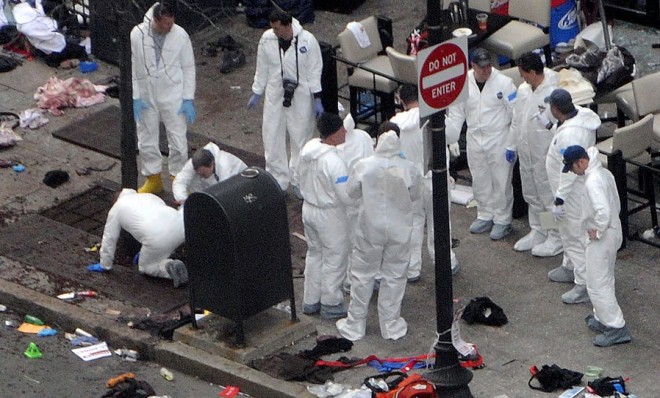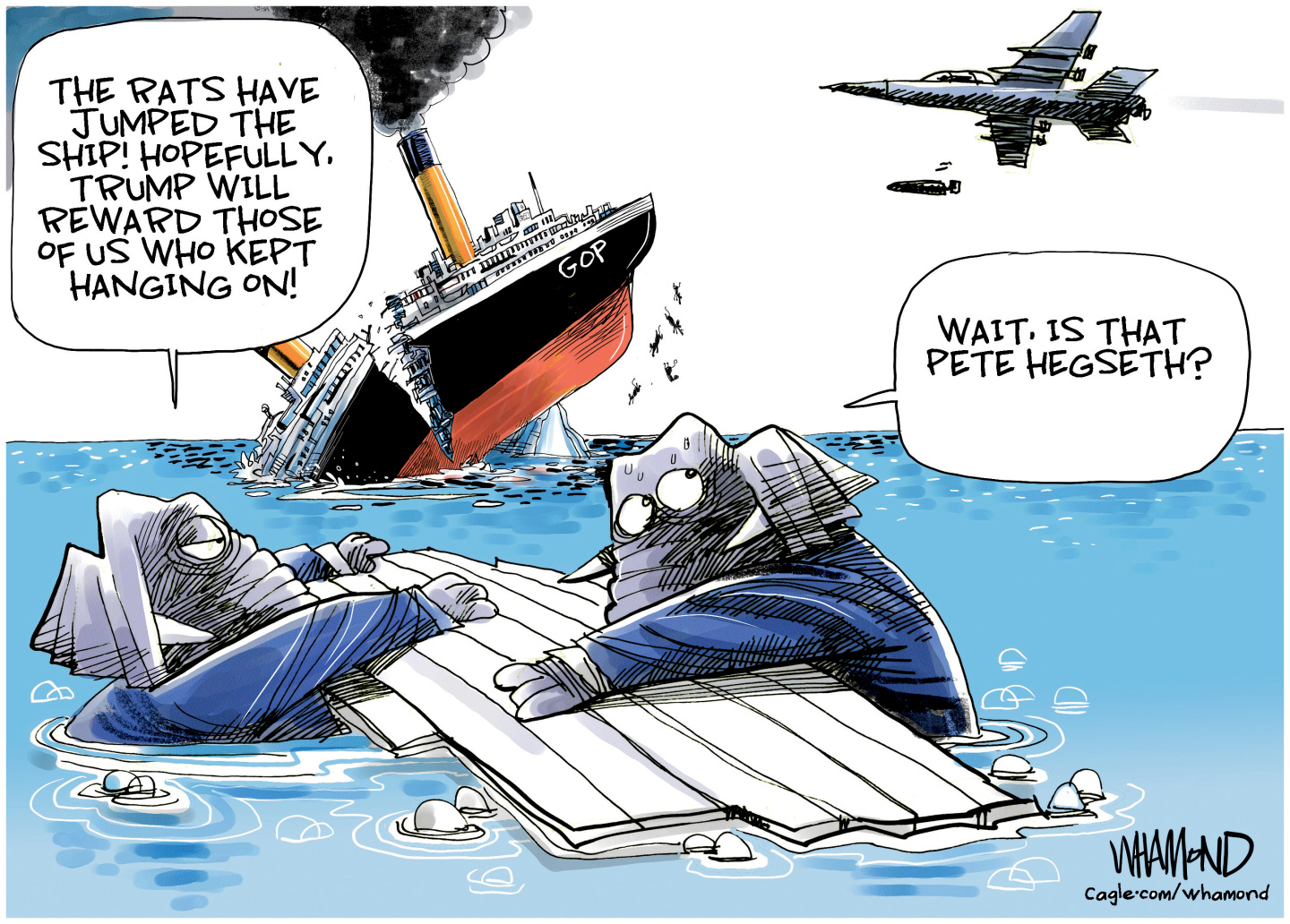The hunt for the Boston Marathon bombing suspects: A timeline
Before Friday morning's shoot-out, investigators closed in on the two men blamed for the terror attack


The violent shoot-out with the two men police believe set the bombs at the Boston Marathon came after nearly four days of furious investigation, with authorities pulling together information as quickly as possible from the crime scene, witnesses, security cameras, and elsewhere. Here's a brief rundown of how the manhunt unfolded:
Monday afternoon, April 15:
The two blasts hit, killing three and wounding at least 176 people, as runners arrive at the Boston Marathon finish line. The hunt for clues begins immediately. Police search trash bins to make sure there isn't another explosive device hidden in the area. Within minutes of the blasts, photos and videos of the bombing stream onto Twitter, Facebook, Vine, YouTube, and other social media.
The Week
Escape your echo chamber. Get the facts behind the news, plus analysis from multiple perspectives.

Sign up for The Week's Free Newsletters
From our morning news briefing to a weekly Good News Newsletter, get the best of The Week delivered directly to your inbox.
From our morning news briefing to a weekly Good News Newsletter, get the best of The Week delivered directly to your inbox.
Monday evening, April 15:
Investigators consider all possible motives for the attack. Three theories: Islamists, anti-government domestic terrorists, a criminally insane lone wolf. President Obama addresses the nation, promising justice, and says, "We do not know whether this was an act of an organization or an individual or individuals. We don't have a sense of motive yet. So everything else at this point is speculation."
Tuesday, April 16:
Authorities say that physical evidence at the scene suggests that the two bombs were fashioned out of pressure cookers that were stuffed with low-grade explosives, along with nails, ball bearings, and other shrapnel intended to cause as many war-like injuries as possible in a crowded area. Police find twisted pieces of pressure cookers on the ground, as well as shredded remnants of backpacks apparently used to carry the explosive devices. The bomb design is described as one frequently used by al Qaeda, although the Islamist terrorist group has made instructions available to anyone online.
A free daily email with the biggest news stories of the day – and the best features from TheWeek.com
Investigators in white suits fan out on the street where the bombings occurred, gathering clues. Police search the home of a Saudi student injured by shrapnel. "He's sweet and kind and a good person," the young man's roommate says. Police say the young man is a victim, not a suspect.
Wednesday, April 17
The FBI asks runners, spectators, and others to email them any photos or videos they have of the bombings, or the moments shortly before or soon after the blasts. "We'd like to review any type of media," said Gene Marquez of the Bureau of Alcohol, Tobacco and Firearms. Reddit and 4Chan also start pulling together pictures and clues in an attempt to crowdsource their own investigation.
Thursday, April 18
The New York Post puts a photo on its front page of two young men on the sidewalk near the marathon finish line and says federal authorities are searching for them. The trouble is, both are innocent. One is a high school runner named Salah Barhoun, who says he wants his name cleared immediately. "It's the worst feeling that I can possibly feel," Barhoun said. "I'm only 17."
Later, the FBI releases photos of the two suspects from security cameras in the area around the scene of the bombings. Within hours, one of the suspects is caught on another security camera as the two men rob a 7-Eleven.
Just before 11 p.m., an unidentified MIT police officer is shot multiple times in his car in Cambridge, Mass. A short while later, two men carjack a Mercedes SUV in Cambridge, keeping the driver in the car for half an hour and then releasing him at a gas station.
Friday, April 19
The police soon track down the SUV in Watertown, about four miles away from Cambridge. The suspects reportedly throw grenades or other explosives out the window and engage the police in a long, intense gun battle. One of the suspects is wounded and taken to the hospital, where he is pronounced dead.
The other suspect is still on the loose.
Police, federal agents, and bomb squads swarm Watertown and shut down a roughly 20-block area to search for the at-large suspect. At a subsequent press conference, police Commissioner Ed Davis urges Watertown residents to stay indoors and not answer their doors or stop their cars for anyone but uniformed police officers. "We believe this is a terrorist, we believe this is a man that's come here to kill people."
The AP identifies the two suspects as brothers from a Russian region near Chechnya. The surviving suspect is identified as Dzhokhar A. Tsarnaev, 19. He has reportedly been living in the U.S. for less than a year.
Harold Maass is a contributing editor at The Week. He has been writing for The Week since the 2001 debut of the U.S. print edition and served as editor of TheWeek.com when it launched in 2008. Harold started his career as a newspaper reporter in South Florida and Haiti. He has previously worked for a variety of news outlets, including The Miami Herald, ABC News and Fox News, and for several years wrote a daily roundup of financial news for The Week and Yahoo Finance.
-
 Political cartoons for December 20
Political cartoons for December 20Cartoons Saturday’s political cartoons include drowning rats, the ACA, and more
-
 5 fairly vain cartoons about Vanity Fair’s interviews with Susie Wiles
5 fairly vain cartoons about Vanity Fair’s interviews with Susie WilesCartoon Artists take on demolition derby, alcoholic personality, and more
-
 Joanna Trollope: novelist who had a No. 1 bestseller with The Rector’s Wife
Joanna Trollope: novelist who had a No. 1 bestseller with The Rector’s WifeIn the Spotlight Trollope found fame with intelligent novels about the dramas and dilemmas of modern women
